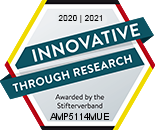Bee semen cryopreservation
The Western honey bee (Apis mellifera) is a species of great economic and ecological value. Apiculture is presently facing important
challenges due to the need to create bees that are tolerant or resistant to introduced or formerly unknown pathogens and parasites. At the same time,
diversity of the available gene pool is rapidly decreasing, with many subspecies and ecotypes of A. mellifera facing massive introgression of foreign genotypes.
In this situation, techniques for the cryopreservation of A. mellifera semen could be of great benefit both for conservational and breeding purposes.
We developed a minimally invasive technique (MIT) for cryopreservation. Development was performed in cooperation with the Institute for Bee research
(Hohen Neuendorf, Germany) and supported by funds of the German Ministry for Food, Agriculture and Consumer Security (BMELV) through the intermediary
of the Federal Office for Agriculture and Food (BLE), within the framework of the program for innovation.
Dual stained fluorescence microscopy of bee semen by Hoechst 33342 (blue) and Propidium Iodide (PI, red).
The blue spots indicate the localization of sperm heads, while red spots are derived from damaged spermatozoa.
| A sperm cluster of bee sperm. In undiluted fresh semen sperm are mainly attached head to head (A). The spermatozoa are immotile and PI-negative.
|
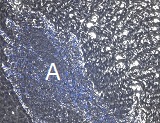
undiluted fresh semen
(Click to enlarge)
|
|
Dilution disintegrates the clusters and spermatozoa become motile (see the video produced by T. May and J. Wegener).
|
| MIT sustains the bee semen cluster. The figure shows thawed and undiluted cryopreserved semen that had been kept frozen for 10 months. Only few spermatozoa are stained by Propidium Iodide. |
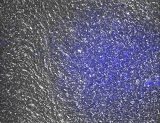
cryopreserved semen
(Click to enlarge) |
| Frozen bee spermatozoa were in good condition after thawing and dilution. PI-stained sperm were rare. |
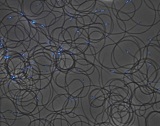
thawed-frozen and diluted bee sperm
(Click to enlarge) |
| Red spots indicate damaged bee sperm (PI-positive). This occurs either by ice crystals or by air bubbles. |
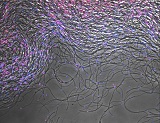
damaged bee sperm
(Click to enlarge) |
For further information please contact: physiological.liquids@amplab.de







